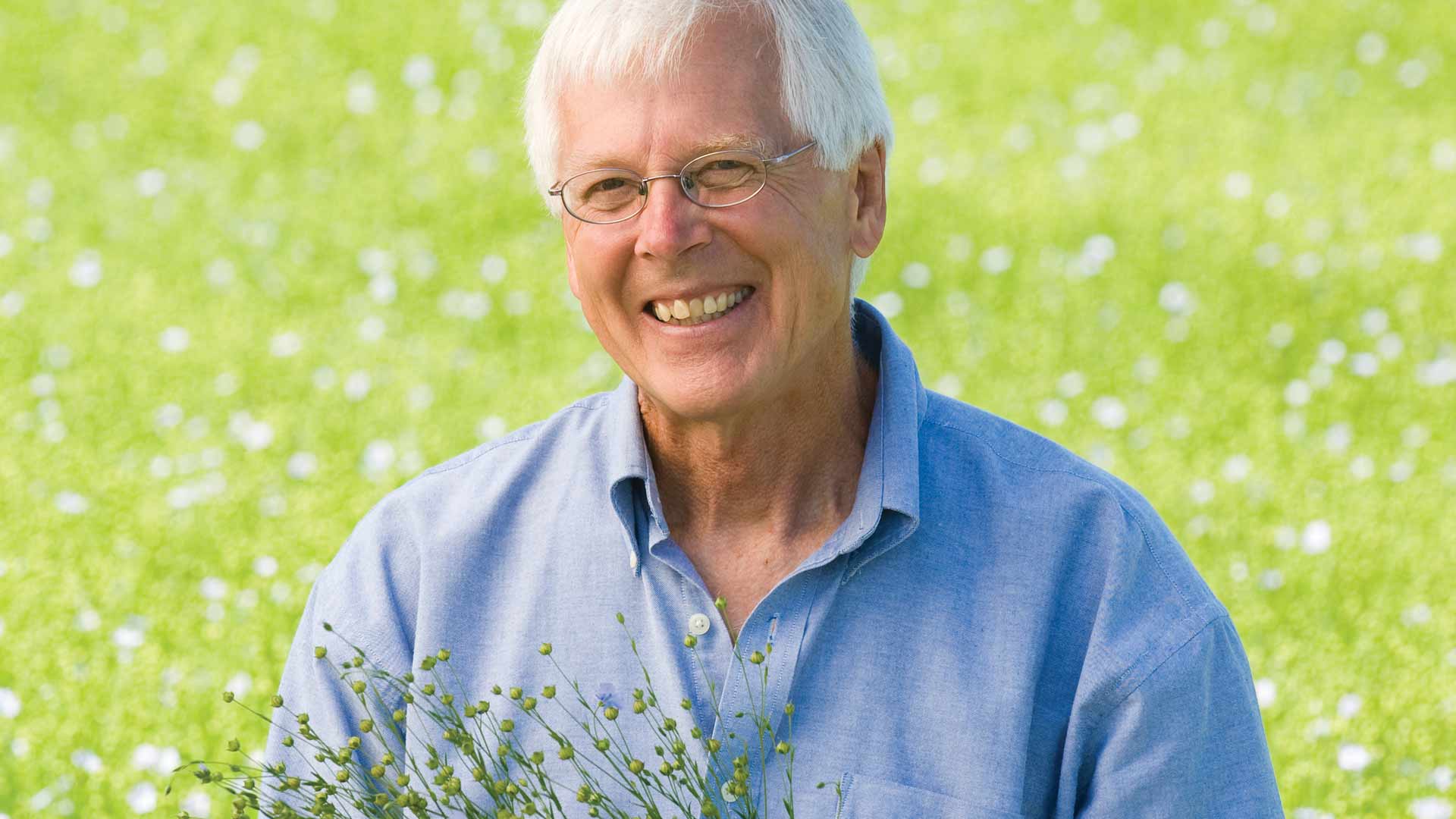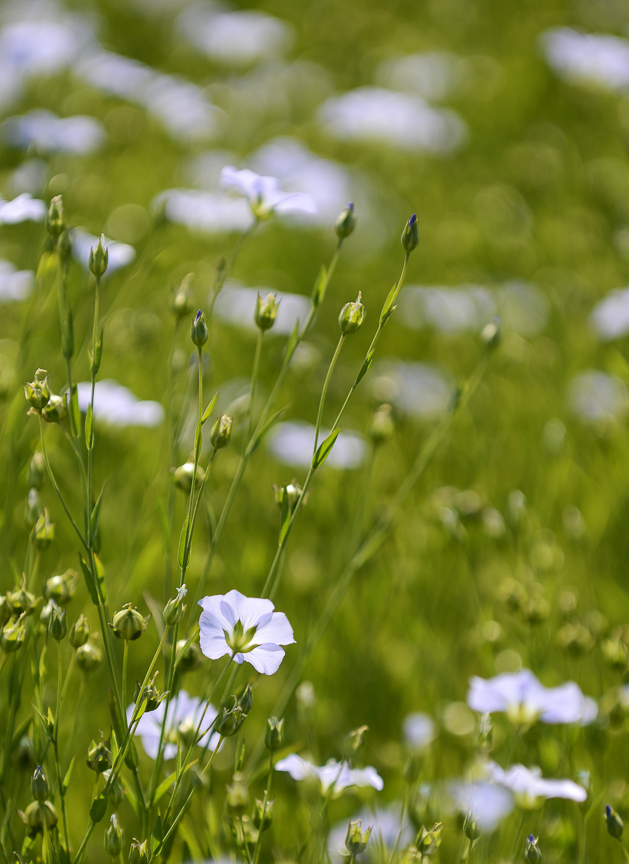–by Liz Morrison
photos by Rolf Hagberg
Fields of sky blue flax could once again blanket northwestern Minnesota.
Farmers from Roseau and Marshall counties are growing flaxseed and fiber to be used in a new technology process for making soft linen fibers that can be knitted, like cotton.
If successful, this new technology could revive northern Minnesota’s flax industry — once a major crop sector — and spur new value-added flax processing in the region, says Michael Sparby, AURI senior project strategist. AURI is helping the grower group explore new uses and markets for flax processing coproducts.
Flax, a cool-season crop, has been grown in the northern Red River Valley since the early days of settlement, says Richard Magnusson, one of about 10 Roseau-area farmers who raised flax to be used in this new process this year. Flaxseed was crushed to make linseed oil for paint and other industrial products. By the 1950s, Minnesota flaxseed production topped 1.65 million acres.
But demand for linseed oil shrank with the introduction of latex paints. Cotton, and later synthetics, replaced linen in textiles and paper. Meanwhile, new crops, including perennial ryegrass seed, soybeans and sunflowers, moved into the northern Valley. Today, Minnesota flaxseed production has dwindled to a few thousand acres, grown for the health food market.
Roseau farmer Greg Grahn, a longtime flaxseed grower, direct markets golden flaxseed as a nutritional supplement, primarily through the internet. He has worked for many years with AURI Senior Scientist of Food & Nutrition Charan Wadhawan on food items utilizing flax. His website caught the attention of a new company that was looking for experienced flax producers to supply seed for its South Carolina growers, who raise flax as a winter crop. Grahn’s internet business led the company to
Roseau County.
“I thought this would be a good fit for our region,” Grahn says. “We’ve been in the seed business up here for many years, and we have a lot of certified seed growers. We’re also experienced flax growers. Everyone in our group has grown oilseed flax.”
The region’s micro-climate is favorable for producing flax fiber, in addition to seed, Magnusson says. After harvest, flax straw is left in the field for a few weeks. Natural moisture softens the raw fibers and loosens them from the inner core or shive — a process called retting.
“It appears that we have the right climate for retting,” Magnusson says, “and we’ve grown flax and understand it. So we could be an additional fiber source — one that’s counter-seasonal to South Carolina.”
In the process of making the linen, the fiber is separated from the non-fibrous shives. Then the raw fiber is treated with a proprietary process to remove stiffening lignins from the flax, producing a linen fiber with cotton’s softness and durability.
Roseau and Marshall county farmers planted about 3,000 acres of flax for the new venture this season. If this new technology takes off, and fiber production goes well, northwest Minnesota could eventually see a significant increase in flax acreage — 30,000 acres or more, Sparby says.
An expanded flax sector would add valuable diversity to the region’s agriculture, Grahn says, just as grass seed production has done. “We’ve been growing grass seed since the 1950s, and it’s been an advantage for us. Sometimes the grass seed has carried us when other commodity markets were down.”
An additional crop in the rotation also has agronomic advantages for weed and pest control, Grahn adds.
Expanded flax production would make it feasible to build a local processing plant to separate the flax fibers from the shives, Sparby says, “so we’d only be shipping the usable fibers.” Shives make up about 70 percent of flax straw. Now, this material is landfilled or spread back on cropped fields.
That’s where AURI comes in. “We’re trying to figure out what we can do with this waste product,” Sparby says.
AURI scientist Al Doering led research at the Waseca coproducts pilot lab to analyze the physical and chemical characteristics of shives. The research looked at traits such as energy value, sorbency, and feed and fertilizer value. 
One of the most promising markets for shives is bedding for compost dairy barns, where it could replace wood shavings, Doering says.
Shives also have good energy content, comparable to wood, and could be pelleted and burned in industrial biomass furnaces.
Another potential use is to soak up oil spills, Doering says, especially oil spills on water. Shives tend to repel water, allowing them to float.
This preliminary work on new uses “shows the vision and innovation of this group,” Doering says. “They are developing new opportunities for the near term, and at the same time, looking at value-added opportunities for the future.”
Idea to reality:
Northwestern Minnesota farmers are growing flaxseed and fiber to be used in a new process in which the flax is used to create soft linen fibers. The inner core of flax straw is a material called shives, which is considered a waste product. The Minnesota flax growers are looking for new uses and markets for shives.
AURI’s role:
AURI analyzed the physical characteristics of flax shives and recommended potential uses for the material.
Outcomes:
If the new technology takes off, northwest Minnesota could eventually see a significant increase in flax acreage — 30,000 acres or more.

